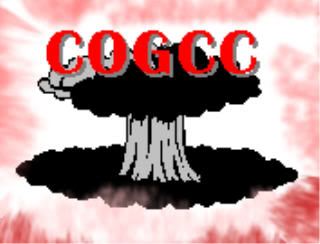A 43-kiloton nuclear bomb was exploded in 1969 in an experiment called the “Rulison Project” by the US Department of Energy to free up natural gas from the tight rock formations. The test worked to a degree – it produced gas, but it was too radioactive for public consumption.
The Colorado Oil and Gas Conservation Commission (COGCC) is meeting today, Tuesday, in Grand Junction to discuss requests from energy companies to drill within a half mile of the atomic blast epicenter in Rulison, an unincorporated area 11 miles west of Rifle in Garfield County.
Does anyone really know close the energy companies can safely drill near this radioactive bomb site? Please read on.
The well where the nuclear bomb was placed has long since been plugged by concrete and the radioactive gas released within the cavern made by the denotation has been burned off. The site is still considered contaminated, but no one really knows how far from the blast site that contamination has spread.
Consider the consequences of atomic pollution. From a story in the High Country News last March:
Radioactive by-products of the blast, including tritium, krypton-85 and carbon-14, still concern the Energy Department. All three of these radioactive isotopes are known to be extremely mobile in gas and water. In drinking water, tritium and carbon-14 readily absorb into the bloodstream and may cause cancer. Exposure to gas containing krypton-85 damages skin tissue and can also lead to cancer.
Tritium is the “primary contaminant of concern over the next 100 years, because it is one of the most mobile radiologic contaminants and is found in abundance” at the test site, according to a March 2000 Energy Department report. The report also notes that “no proven and cost-effective technologies exist for the removal of radioactive contamination from groundwater at these depths.”
As a result, the department has tested water in wells surrounding the blast site each year, and is getting ready to conduct computer modeling of the immediate area surrounding ground zero, in order to estimate the potential for movement of radioactive isotopes.
Recently a new federal study, based on computerized mathematical models and not actual physical tests, has proposed that radioactive byproducts have most likely not migrated beyond a half mile radius from the Rulison epicenter.
In Grand Junction the oil and gas commission members, newly appointed by Gov. Bill Ritter, will be listening to a full day of testimony from energy companies, scientists, Rulison residents and members of the audience about the drilling requests closer to the blast zone.
Next: Watch for a full report by Colorado Confidential on Wednesday .
Read more about the Rulison Project:
The H-Bomb and HB 1341
Oil and Gas Update: It’s All About Impacts
Rulison Families Fight Drilling in Nuclear Test Zone





